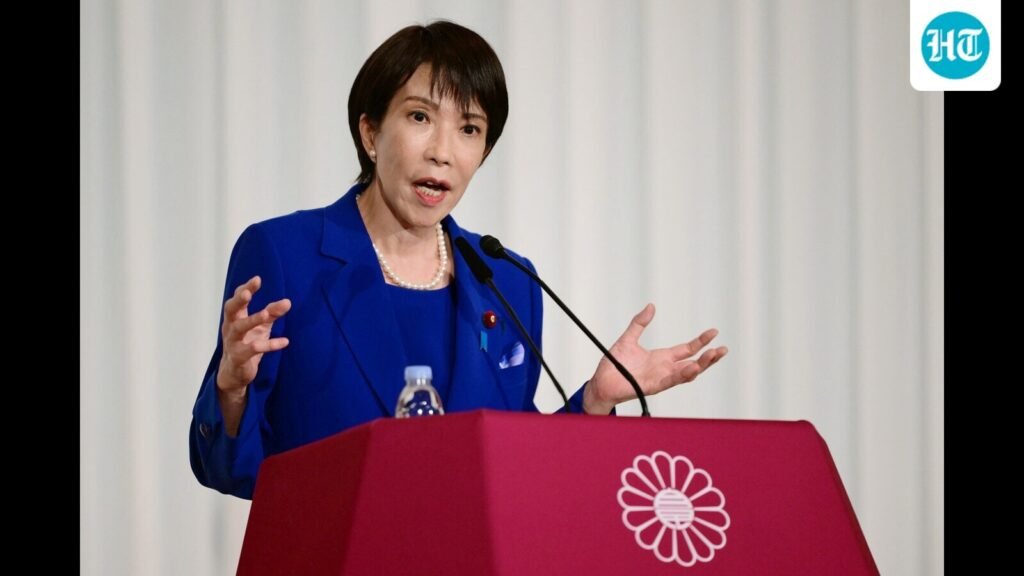
For the first time in its postwar history, Japan will elect a woman as the prime minister (PM). Sanae Takaichi, A Veteran Conservative Politician Secure the Ruling Liberal Democratic Party (LDP) ‘S Presidency, and if the Diet (Japan’s Parliament) Endorses Her for the PM post, She will break a barrier

Her election to the ldp presidency was a surprise to many, giving opinion polls sugged Koizumi represented generational renewal and enjoyed strong public backing. Yet, The LDP’s Factional Arithmetic, Grassroots Loyalties, and Conservative Institutes Produced a different outset.
The ldp presidency is decided in a two-found contest. In the first round, bot parlomentarians (295 votes) and Grassroots Members Nationwide (295 Votes) Cast Ballots. If no candidate secures a Majority, the top two advance to a runoff. In this second round, parliamentarians Vote against, while the grassroots’ Role Shrinks to 47 Votes, One Per Prefecture – Giving Parliamentary Factions The Decisive Swayay.
Koizumi appeared to mps and urban voters through his reformist image, but takaichi second the loyalty of the conservative prefectural chapters – the party’s backbone.
Takaichi’s Triumph However is Not Necessarily Evidence of a Gender Revolution in Japanese Politics. Instaad, It Reflects The Party Need for Consolidation after Recent Electoral Setbacks. The ldp turned to a Leader Who Cold Hold Its Conservative Base and Prevent Defections to Populist Rivals Such as the Sankei-Kat. By Choosing Takaichi, The LDP Signalled Continuity Rather Than Transformation, even as it made history. Her Challenge Now is to Consolidate Factions to Prevent Further Defections to Populist Rivals and Broaden Appeal to Younger, Urban Voters who Find Koizumi-Style reformism more atrachive.
Sanae Takaichi is Regarded as an Arch-Conservative firmly aligned with Shinzo Abe’s Ideological Camp. A Regular Visitor to the Controversial Yasukuni Shrine, She Reinforces her nationalist credentials despite fierce criticism from China and South Korea. On definance, she calls for japan to spend at least 2% of GDP, Doubling its long-standing 1% Ceiling, and supports developing domestic arms Industries.
Economically, Takaichi has shifted from her Earlier Support for Aggressive Deficit Spending toward a more cautious stance. She now emphasies restoring the LDP’s Credibility and Tackling Voter Concerns about Rising Living Costs and Job Insecurity. Rejecting “Work-Life Balance” for Hercelf, She Demands Equal Commitment from Her Cabinet-a no-nonsense style that appeals to both working-age citizens and the elderly.
Nationalist themes also feature strongly. She has warned against unchecked immigration and mass tourism, essentially in her home constituency of nara, where there has Thought potentially alienating abroad, such rhetoric resonates with domestic voters drifting toward popular alternatives.
On Foreign policy, the us alliance remains the corners of Japan’s security. Yet Relations Have Been Strained under the Trump Administration, Particularly Over Tarifs and Defense Burden-Sharing. Shigeru Ishiba, Takaichi’s Predcessor in the Prime Ministerial Office, Had Negotiated a Trade Package Involving $ 550 billion in Japanese Investments in Return for tariff relay Disputes person.
Takaichi Signals a Firmer Stance. She Insists Trade Deals must Benefit Japan and is expected to renegotiate unfavorable terms. Her first Diplomatic Test will come at the East Asia Summit in Kuala Lumpur, Where She will meet us President Donald Trump, Prime Minister Narendra Modi, and Other Regional Leaders.
Takaichi has pledged to Strengthen Japan’s Flagship “Free and Open Indo-Pacific” (Foip) Strategy. She faces the challenge of ensuring japan is not sidelined by any protective us-china bargains. Strengthanting Security and Economic Ties With India, Australia, and Southeast Asian Partners will be Central to Her Approach.
However, Her Hawkish Profile will complicate relations with China and South Korea. While She May Soften Certain Gestures as PM, Her Political Base Expects Her to Maintenalist Positions. Balancing domestic legitimacy with regional diplomacy will test her Leadership.
India and Japan have steadily Deepened their Strategic Partnership, Covering Infrastructure, Digital Technology, and Labor Mobility. In August, Ishiba and Modi Agreed to Train 500,000 Indian Workers and Host 50,000 in Japan Over five years. Takaichi’s Scepticism About Foreign Workers Raises Questions About The Program’s Future. Analysts sugged her Concerns are Directed Primarily at Chinese Migrants, Yet Uncertainy Lingers. Despite Never Visiting India, She has maintained close contacts with the Indian embassy in Tokyo. Her Commitment to Foip Ensures that India Will Remain Central to Japan’s Strategic Calculus Under Her Leadership.
Symbolically, Takaichi’s Victory is GroundBreaking. Substanively, it reflects the ldp’s calculation that only a hawkish, conservative woman could project with project stability in Uncertain Times. Whether she can turn symbolism into effective governance
Gurjit singh is a former ambassador to germany, indonesia, ethiopia, asean and the African union. The views expressed are personal





